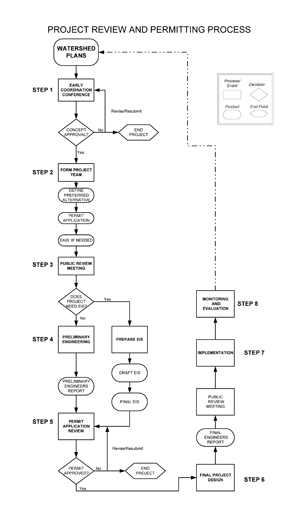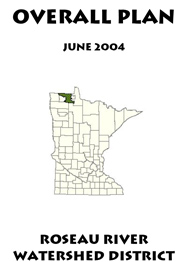By-Laws and Administrative Policies
By-Laws
(By- Laws adopted by Roseau River Watershed District under Chapter 103D.315:Subd. 11 "Administration By-Laws: "The managers shall adopt By-Laws for the administration of business and affairs of the Watershed District.") To view the compete by-laws, click here.
Administrative Policies
The Roseau River Watershed District Board of Managers developed these policies to give more specific parameters to the operations of the organization and the roles and responsibilities of the Board and Administrator.
At all times, the District's bylaws and relevant statutes will supersede these policies. To view our policy handbook, click here.
Data Practices Policy
The follow are updates to our data practices policy:
To view our Data Practices Policy For the Public, click here. To view Requests for Data About You and Your Rights as a Data Subject, click here.Overall Plan
The information contained in th is overall plan was gathered from many sources, the most important being local input. During the development of this overall plan, the Roseau River Watershed Board of Mangers held meetings to gather concerns of local citizens. Advisory committees were formed and met monthly over 18 months to identify issues, concerns and solutions that address water problems in the Roseau River Basin. One group was a Citizen's Advisory Committee (CAC) and another group was a Technical Advisory Committee (TAC). Both of these committees worked very hard to identify problem s and offer solutions to im prove water management issues in the Roseau River Basin.
For additional resources please see some potential empoundment sites, Appendix 13, and the HEC-1 Hydrologic Model.
In June of 2004 the Roseau River Watershed District (RRWD) Board of Managers approved the District's Overall Plan. That document encapsulates the history, general information, existing conditions, goals and sub-watershed implementation plans of the District at that time. The Overall Plan has served as a guidance document as the District has worked toward achieving the outlined goals. Watershed Management Plans are intended to be updated every 10 years. On September 26, 2012 the District's Plan update deadline was extended to April of 2019. This extension was to allow synchronization with the Watershed Restoration and Protection Strategies (WRAPS) process, and a new planning program called One Watershed One Plan (1W1P). The 1W1P process is meant to bring together all management plans that lay within a watershed's geographic boundary. Due to delays in completing the WRAPS report and the demands on state agency staff with other 1W1P plans in progress, the RRWD requested and was granted a new extension until December 2023 with a required amendment to the 2004 Overall Plan to be completed by June 30, 2020. Click here for more information on the March 2020 Management Plan Amendment.
The ammendment to the Overall Plan (June 9, 2020) can be found by clicking here.
Detention Report
Efforts to develop comprehensive plans for expanded distributed detention strategies are being developed throughout the United States portion of the Red River Basin. These planning efforts establish benefit to local damage centers as well as reduction in contribution to the Red River main stem. Planning efforts are largely funded through the Red River Watershed Management Board for Watershed Districts contributing to the MN portion of the Red River Basin and by the North Dakota Joint Red River Water Resource District and the North Dakota State Water Commission for subwatersheds within the ND portion of the Red River Basin. This report summarizes methodology and outcomes of the Roseau River Watershed Expanded Distributed Detention Strategy, funded by the Red River Watershed Management Board (RRWMB). Houston Engineering, Inc. (HEI) and HDR, Inc. (HDR) were tasked with the responsibility to execute the RRWMB Expanded Distributed Detention Strategy for the Roseau River Watershed District. HEI analyzed the Upper Roseau River Watershed and Hay Creek tributary, while HDR analyzed the Lower Roseau River Watershed. To view the complete report, click here.
Targeted Implementation Plan
In 2016 the International Water Institute was awarded LCCMR funding to run PTMApp for the Roseau River upstream of Roseau Lake. The RRWD was also awarded and BSWR Clean Water Fund grant to compliment that effort and draft a report to summarize the results. The RRWD Board, as well as Canadian partners, provided additional funding to complete the model all the way to the Red River. Houston Engineering was hired to complete a Targeted Implementation Plan (Plan) for the Roseau River basin. Included within this Plan are maps showing potential locations for implementing technically feasible Practices as well as estimates of the number and types of Practices needed to achieve regional sediment and TP reduction goals. The estimated cost of the Plan to make progress towards goals are included to guide funding requests for implementation. This Plan divides the study area into eight management areas to assess whether the water quality goals can be achieved. The management areas for the study area are based largely on 10-digit HUC boundaries within the US and comparable watershed delineations that have been performed in Canada. The Plan can be used to guide Practice implementation decisions on both public and private lands and to coordinate these efforts among local, state, and federal governments; international organizations; non-profit governmental organizations; individual producers; and agribusiness. Nothing in this Plan should be construed as forcing landowner cooperation. This Plan is intended to guide implementation efforts and should not be considered prescriptive. Click here
Roseau River Watershed Mediation Agreement

This agreement is the product of eight months of consensus-based, mediated negotiations by the Red River Basin Flood Damage Reduction Work Group ("Work Group"). It responds to a mandate from the Minnesota Legislature to resolve gridlock over state permitting of flood damage reduction projects in the Red River Basin. The agreement is intended as the framework for a new, collaborative approach to implementing both flood damage reduction and natural resource protection and enhancement in the Red River Basin in ways that will benefit all Minnesota's citizens. The keys to this new approach are clearly identified goals, comprehensive watershed planning, early consultation and collaboration on flood damage reduction projects among stakeholders, and a cooperative approach to permitting of those projects.
The mediation was set up to seek resolution of the issues in a positive manner and allow for the implementation of the most effective and environmentally friendly alternatives that would accomplish flood dam age reduction. This document includes the agreements that resulted from that mediation process.

